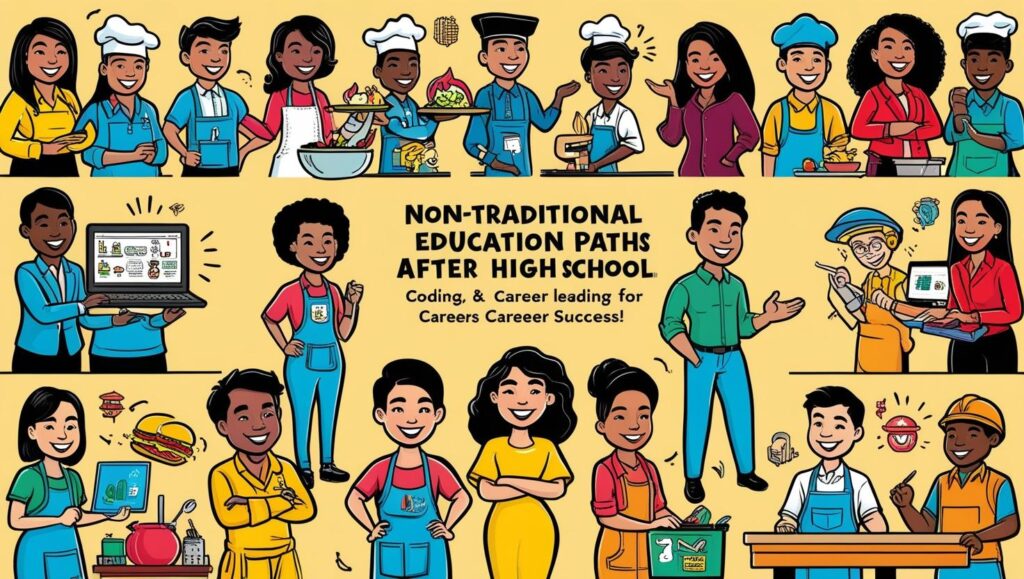The past few years have brought major changes in American higher education, but one thing that remains is the prominence of the online degree. As students started flocking to virtual learning platforms, the idea of earning a degree without stepping foot into a classroom has evolved into one that is not only acceptable but in many instances preferred. As US students make their way through a world that is being increasingly influenced by technology and flexibility, the right idea of the pros and cons matters more than ever regarding online education.
Virtual Learning in the U.S.: What the Future Holds and the Online Degree Pros and Cons

Already, online education has experienced a huge growth in the United States over the last twenty years, but the COVID-19 pandemic has faced other forces that have helped the industry make this shift very quickly. Now, universities and colleges nationwide provide entire online degree programs, in everything from business and healthcare to engineering and education. Consequently, everyone now from recent high school graduates to mid-career professionals, is considering online degrees as real substitutes for traditional campus-based programs.
The new normal boils down, as ever, to virtual classrooms, video lectures, digital discussion boards, and even cloud-based submissions. Institutions are spending millions of dollars on learning management systems (LMS), and faculty are receiving training to be good digital instructors. This indicates a more permanent transition in the delivery of education, one centred around flexibility, accessibility, and digitalisation of the student experience.
Online Degree: The Best Benefits of Them: Flexibility and Convenience
The flexibility of online education is arguably the greatest advantage of online education for many students in the US. Students can maintain a full-time job, take care of a family, or live in a rural area where commuting to attend classes is out of the question, and still find a way to get written material and prepare their assignments on their schedules. An asynchronous learning model can adapt to different learning styles, personal schedules, and life responsibilities, allowing for the freedom that is seldom found in an on-campus program.
Aside from flexible working hours, one of the other biggest benefits is geographical freedom. With students not restricted to any part of the country when choosing a university. A person living in rural Montana can now join a top-ranked online degree from a university in New York or California without moving. This availability means that a wealth of academic opportunities is now available that may have otherwise been unfeasible for many.
Cost-effectiveness is one of the reasons students choose virtual degrees. Although tuition is similar to many on-campus programs, online learners typically save money on commuting, housing, and other campus costs. A few institutions reduce the financial burden by charging lower tuition fees for online programs.
Online Degree Programs: Academic Quality and Accreditation
![]()
Is an Online Degree as Good as a Real Degree? One question that many students ask themselves is whether an online degree is the same as a regular degree. Owing to that, as well as the more general rise of online education into the mainstream, the overall quality of standards in academia has massively improved. Most reputable universities have ensured that their online courses meet similar stringent academic standards to their in-person counterparts.
This is where the role of accreditation is quite significant. To help US students, it is also recommended that they attend institutions that are recognized by a reputable accrediting body such as HLC or MSCHE. These programs are accredited, so students know their education is top-notch and will be respected when they enter the workforce or seek further education.
Constraints and Drawbacks of Online Degree Platforms
However, online education does have its drawbacks. The most important challenge of all is the lack of physical interaction. In a regular classroom, the students have unplanned discussions with friends and teachers, immediate feedback, social kingdom. Or while virtual learning platforms try to recreate these with video conferencing with peers and discussion forums, the personal touch is just not there.
Thereby, self-discipline and motivation are also some of the major factors determining the success or failure of an online student. High schoolers can get distracted in their ways or may not be experts at balancing their time with more freedom than they have had in years in a class environment. This could lead to procrastination on a serious level and bad grades in your classes down the road if you are not proactive about addressing it.
Digital divide is also another worrisome point. Participation in virtual classrooms is hindered for a variety of reasons, including a lack of high-speed internet access, devices, or silence, among other things. This disparity can particularly hurt students from low-income households, reducing the inclusivity of online education.
Post-Graduation Results and Employer Attitudes
Over the past few years, online degrees have been viewed very differently in the job market. With many other elite reacting by creating online programs, employers have become increasingly comfortable with graduates who earned their degrees virtually, as long as the school is accredited and the program is respectable. Online degrees are typically considered to be equivalent to traditional ones for such fields as IT, business, and healthcare administration.
Still, certain areas hold on to a greater preference for attending school, especially those that remain more hands-on or lab-intensive, like engineering or the natural sciences. Here, hybrid models, with some of the work online and some in-person, could represent the best of both worlds.
The other thing is about internships, and then this leads to networking. One: Traditional colleges offer job fairs, career guidance, and alumni networks that could potentially lead to a job. Online students may also find that their career services are more limited or less interactive, although they may still have virtual services available.
The Future of Online Degrees in the United States

The future of online education is going to be brighter and brighter with the advancement of technology. The online learning experience is being augmented with artificial intelligence, augmented reality, and personalized learning algorithms. Those tools intend to close the gap between physical class and digital ones, providing a greater experience, immersiveness, and an adaptive learning experience.
In addition, there is a growing need for continued learning and all-important career development. With more adults going back to school to upskill or retrain for different careers, online degrees provide the convenience and flexibility that they need to get their degrees. In turn, universities are widening their footprints in digital course delivery and creating micro-credential programs that enable students to obtain relevant skills more quickly.
A mix of state initiatives and partnerships with employers is also shaping the online education ecosystem. Things such as subsidies for tuition or strategic attention to online learners are making virtual degrees more accessible and fairer than ever before.
Final Take: Which Option To Pick
Flexible, affordable, and accessible online degrees are an appealing option for US students. Due to technological developments and increasing employer endorsement, virtual learning has emerged as a legitimate and sometimes more convenient option compared to classroom study. But students also have to weigh the disadvantages — lack of face-to-face contact, a need for self-motivation, and uneven access to information – before taking the plunge.
In conclusion, whether to choose online education or traditional education really depends on the learning style, career goals, and personal circumstances. As US students weigh the advantages and disadvantages of online education, thoughtful and well-informed decisions can help equate academic goals with long-term achievement.




Pingback: Maximize Your Online Degree Value: Networking & Jobs - Education Hub